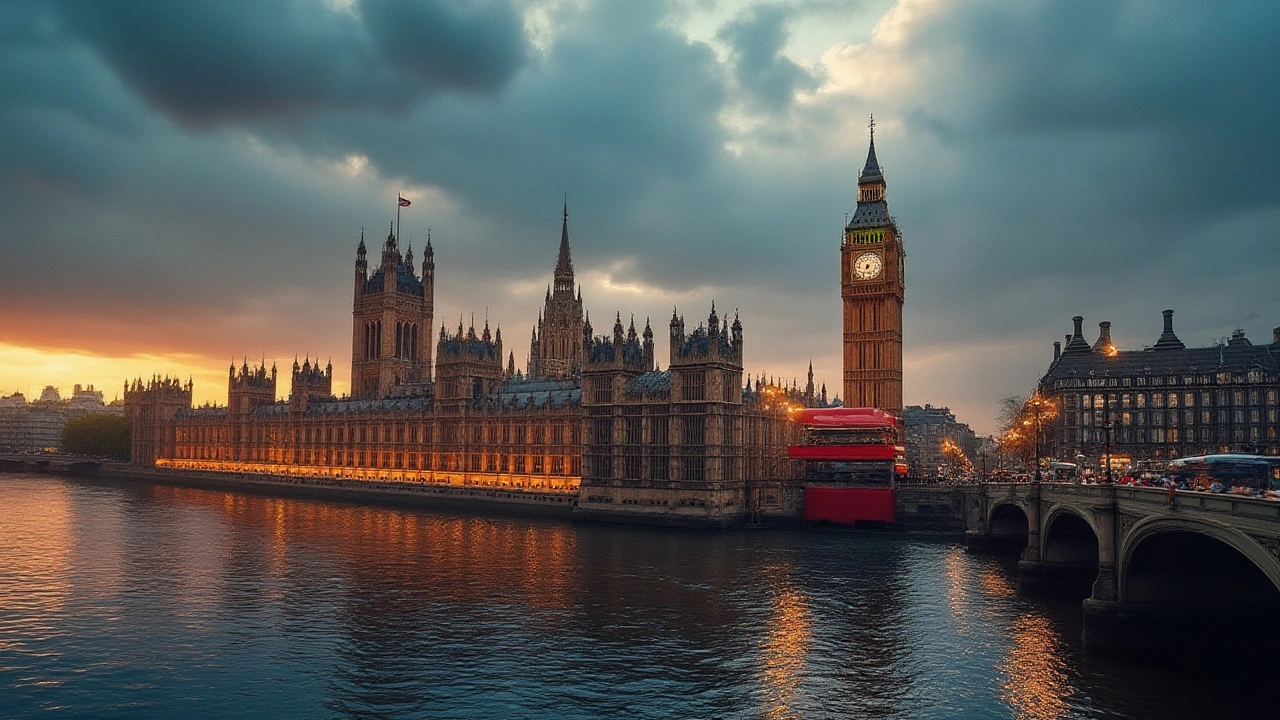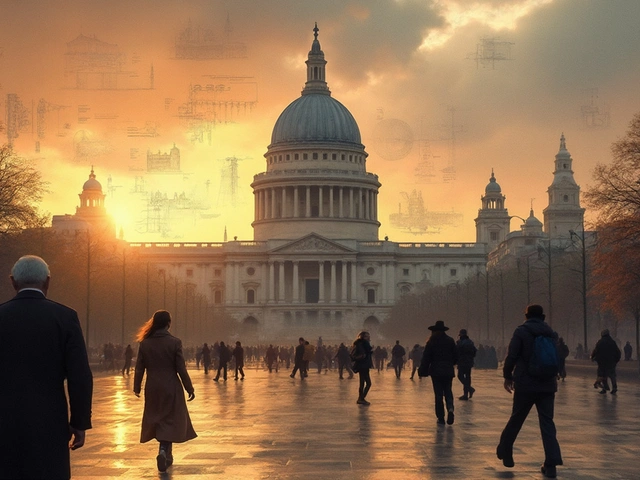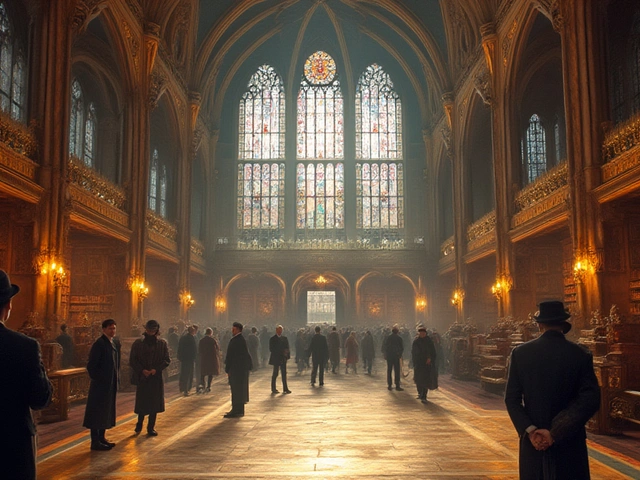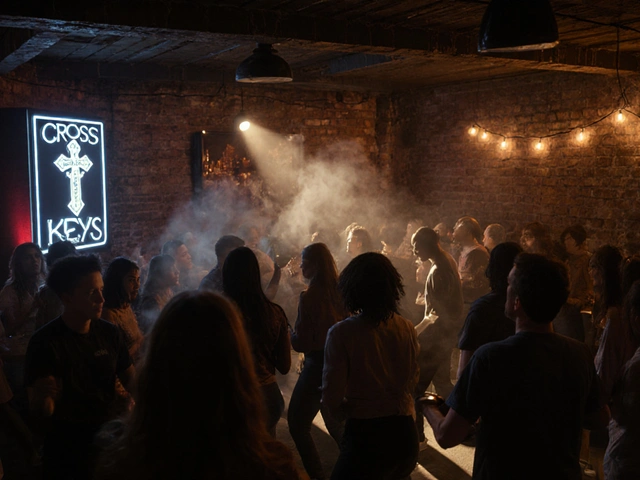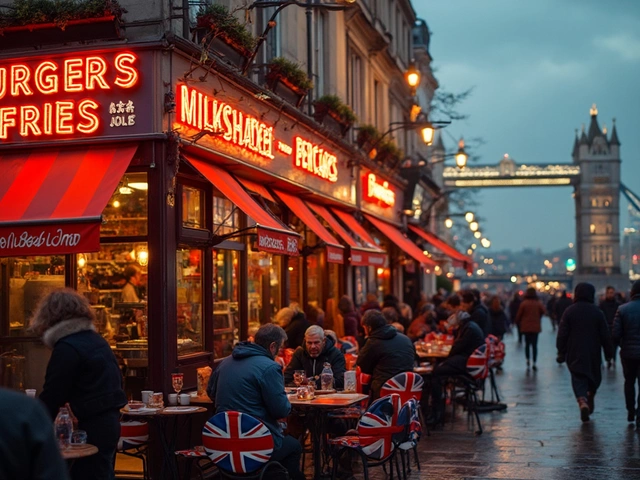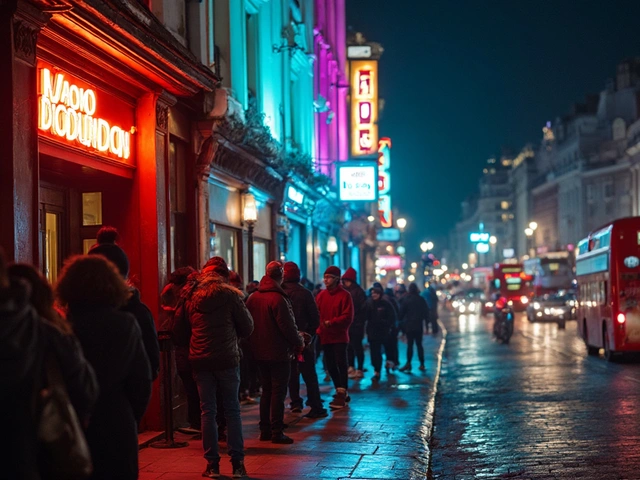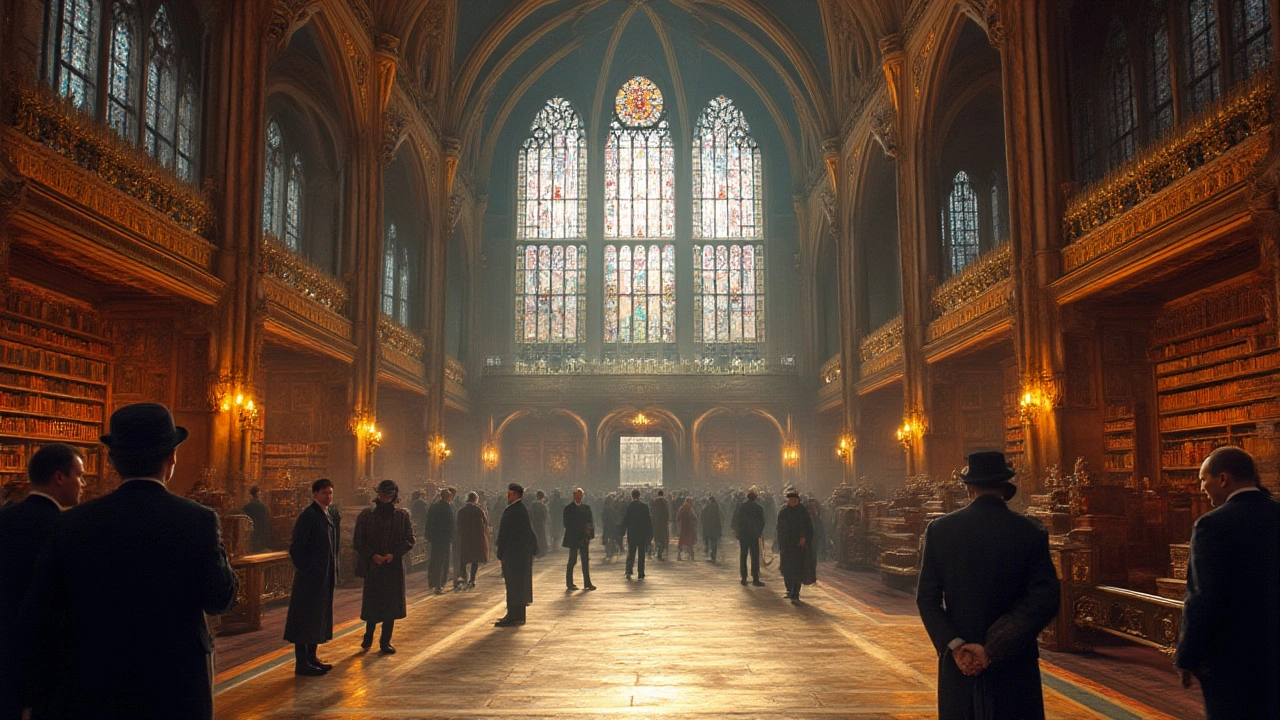
Even if you’ve never snapped a selfie outside Big Ben, the symbolism London’s skyline borrows from the Houses of Parliament is impossible to ignore. But what happens beyond those ornate Gothic towers and golden spires facing the Thames? If you’re living, working, or just soaking up the city’s quirks, the real drama unfolds inside—where power, tradition, and a touch of British eccentricity collide. Welcome to the story of two Houses: the Commons and the Lords. Each is tucked beneath those iconic London rooftops, crafting the rules that ripple out from Westminster to every borough, estate, and riverside café in town.
The Palace by the Thames: Snapshots of a London Landmark
Strolling along Westminster Bridge, there’s no mistaking the Palace of Westminster. Locals just call it Parliament. It’s one of those places every Londoner passes amid daily bustle, half tourists pressing their faces to the fence, half civil servants dashing to meetings. Yet few stop to consider the wild history stitched into the walls. For starters, Parliament wasn’t even built as a government centre. Rewind to the 11th century: it was a royal residence. That’s right, those lavish towers—Victoria and the Elizabeth Tower (home to Big Ben)—once echoed with coronations and banquets.
The building you see today rises from the ashes of disaster. Fire tore through the medieval Westminster Palace in 1834. Architect Charles Barry, with Augustus Pugin’s flair for the dramatic, rebuilt the palace in what’s now the most photographed Gothic Revival silhouette in London. The result? An architectural jigsaw. Over 1,100 rooms, nearly 100 staircases, secret passageways, and even a shooting range hidden below (designed for when members feared civil unrest). Maurice, one of the Parliament Visitor Assistants I chatted with last summer, reckons the House still has the best views of the London Eye—if you get invited inside, of course.
It’s not just politics. The venue hosts classic school trips, royal events, even the odd film crew. Maybe your local school (Eton, Harris Westminster, St. Marylebone) snags a tour. If you think it’s all musty old men, think again—London Fashion Week once used Westminster Hall for a catwalk. What other city blends ancient power and modern style quite like this?
| Fact | Details |
|---|---|
| Year rebuilt after fire | 1840-1876 |
| Number of rooms | 1,100+ |
| Main towers | Elizabeth Tower (Big Ben), Victoria Tower, Central Tower |
| Architects | Charles Barry, Augustus Pugin |
The House of Commons: Where London’s Voices Get Rowdy
The Commons might just be Britain’s most famous shouting match. Elected MPs from London boroughs like Hackney, Westminster, and Bromley pile onto those bottle-green benches. Ever watched Prime Minister’s Questions (PMQs) on the BBC? Those jeers and cheers are very real. Londoners tune in not just to watch laws being made, but to spot their MP—Sadiq Khan used to argue policy here before becoming Mayor; Diane Abbott, for Hackney North, is a fixture.
Unlike the stately Lords, the Commons looks almost snug, always packed to the rafters during big debates. The room can’t even hold all 650 MPs at once. There’s a famous snatch of green carpet between the two rows—marked with stripes to stop MPs from crossing if tempers flare. The Speaker sits up front, trying to wrangle chaos. Barely a day goes by when some London issue—housing crises, Tube strikes, air pollution, or ULEZ (London’s Ultra Low Emission Zone)—isn’t thrashed out here.
Spotting a session is easier than you think. Sure, security’s tight (especially post-2005’s tragic events), but Londoners can book gallery tickets through their MP, drop by on a whim for a queue, or even watch the Commons live on Parliament TV. Self-guided tours reveal 400-year-old traditions, like dragging the Speaker to their chair while they pretend to resist, or the ritual Black Rod banging on the Commons’ door when the Queen opens Parliament. Whisper it, but many Londoners skip the guided history and just come for a selfie beside Churchill’s statue.
If luck’s on your side, you might spot the cafeteria in Portcullis House serving Joe’s tea or Greggs sausage rolls alongside long debates. And if you ever hear an MP name-dropping a local London market or the Arsenal/Chelsea rivalry, just know they’re not showing off—it’s the ultimate way to prove London street cred inside these chambers.

The House of Lords: Red Benches, Ermined Robes, and Old-School Wisdom
The Lords might look like Hogwarts alumni, but don’t be fooled—they wield real influence. Where else would you spot a Baroness from Camden debating with an ex-London police chief or a Nobel laureate in economics? The membership is a proper London mix: bishops from historic city cathedrals, hereditary peerages, political appointees, even a few celebrities. Ok, so the Lords aren’t elected; titles are awarded for service or excellence, and their lifetime tenure means it’s packed with long memories.
While the Commons thrashes out the daily drama, the Lords are the country’s “wise heads,” scrutinising, revising, and sometimes sending bills back for rework. About a third of their debates touch directly on things that Londoners care about—urban inequality, NHS funding, even impossible Heathrow expansions. If you think their red-leather benches look Grand, you’re right: the Lords chamber is all gold and ornate wood. But it’s not all pageantry. The Lords put the brakes on plenty of hasty laws. Their 2015 snub to Osborne’s tax credits plan got headlines from the Evening Standard to Time Out.
Tradition runs deep: the Lord Speaker enters trailing an ermine robe; three maces and a ceremonial woolsack (yes, a literal sack of wool) still symbolise the roots of British commerce and monarchy. The Lords chamber can fit 400, though with over 700 sitting peers, plenty cram standing room only for major events. Contrary to the old stereotype, the Lords are surprisingly techie—debates are now streamed, and you’ll find more than a few with X accounts live-posting from the benches, so younger Londoners can engage directly.
If you get invited to see a debate, don’t expect barracking. It’s polite, deliberate, and full of “my noble friend” phrases, but these folks get results. When there’s a London emergency—from bomb threats to Grenfell—they’re often the first chamber to demand a government response. So behind the costumes and ceremony, the Lords are often guardians of the public’s interests, especially when things get turbulent.
Royal Traditions, London Quirks, and Secret Rituals
Parliament isn’t just about power—London loves its traditions, and here, they happen in full view. Take the State Opening of Parliament: Londoners line Whitehall, peering at carriages and soldiers in plumed hats. The Queen (now the King, as of 2024) arrives by coach from Buckingham Palace, greeted under the Victoria Tower with almost medieval spectacle. Black Rod’s knock is answered only after the Commons slam their doors in royal defiance—a rebellious London touch dating from Charles I’s forced entry in the 1600s.
No two days are the same in Parliament. Mondays, the bells chime for votes; Tuesday evenings, the Terrace Pavilion hosts parties for City of London bankers and tech start-ups alike. The River Thames offers a unique perspective—sunset cruises with City Cruises come alive as Parliament glows golden. On Remembrance Sunday, poppies blanket Westminster, and Londoners from every borough pay respects at St. Margaret’s—squeezed right next to the main palace, where the capital’s most famous weddings happened (Samuel Pepys might’ve written about yours, if you were lucky).
Security is state-of-the-art, but once inside, ancient quirks persist. Members aren’t allowed to die “in the House” (urban myth, but security says they’ve had some close calls). MPs can’t wear armour (Edwardian rule), nor can you call someone a liar (use "terminological inexactitude" if you’re old-school). For lunch? The MPs’ canteen still serves Cornish pasties and Bakewell tart, while the Lords’ members-only bar once counted Margaret Thatcher as a regular for G&Ts.
- During a general election, London’s media camp for days in College Green, turning the area into a patchwork of gazebos.
- Tube journeys get busier on Budget Day and Protest Fridays—watch for crowds flooding out of Westminster and Embankment stations.
- The green lights on Westminster Bridge match the Commons’ benches; the red lights on Lambeth Bridge mimic the Lords.
If you want to dive deeper, the Parliament Education Centre offers interactive sessions for schools. Adults can join themed guided tours, sometimes hosted by MPs or Lords themselves, and the annual Open House London event unlocks rare parts of the palace—don’t sleep on those free tickets!

Visiting, Watching, and Living Parliament’s London Story
So, you’re in London with Parliament on your mind. Maybe you work in the city, or you’re just killing time before a matinee at the National Theatre. With Parliament’s doors more open than ever (at least, compared to a decade ago), there are ways for anyone to peek inside London’s beating political heart. The most straightforward? Book a ticket online for a guided Saturday tour—UK residents get discounts, students even more. Weekdays offer free access to ‘sit in’ on debates or select committee sessions (phones off, please), and occasionally, you’ll snag a pass to see the roof gardens or the Speaker’s state rooms during charity fundraisers.
If you’re a Londoner, try writing your MP and requesting gallery tickets—that’s how many school kids catch their first whiff of Parliament floor drama. Local press (like the London Evening Standard) highlight Parliament’s quirkiest weeks, from UK music nights in Westminster Hall to book launches in the crypt. For remote Londoners—think those homeworking in Croydon or out east in Stratford—ParliamentLive.tv keeps you up to date. Watching the shenanigans with a cup of Yorkshire Tea? That’s peak London luxury now.
Insider tip: the Jubilee Café beneath Westminster Hall dishes up surprisingly affordable lunch specials, while the souvenir shop offers Parliament-branded marmalade and tea towels—grab these when you visit, they sell out during tourist season. If you’re up for a real treat, time your trip to coincide with the London Marathon finish (Parliament Square hums with energy) or New Year’s fireworks on the Thames, when the palace becomes the city’s ultimate backdrop.
The Houses of Parliament are no dusty relic—they’re the nerve centre of London, constantly evolving, arguing, adapting. Step inside, and you’re joining a conversation that’s been shaping the city for almost a thousand years. Whether you leave fired up about politics, awestruck by architecture, or just thrilled you finally got that perfect shot of Big Ben, there’s always another chapter waiting to be written beneath those storied roofs.

